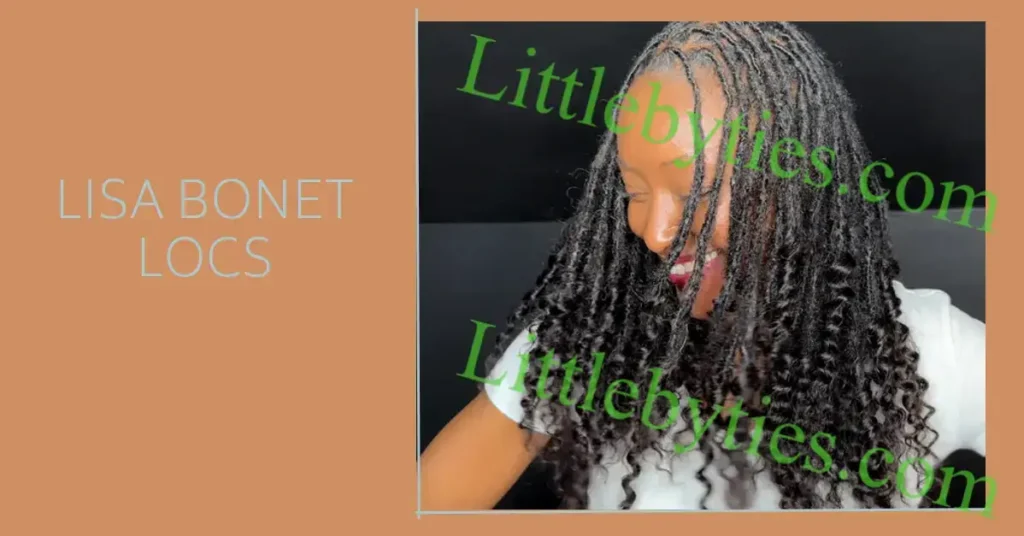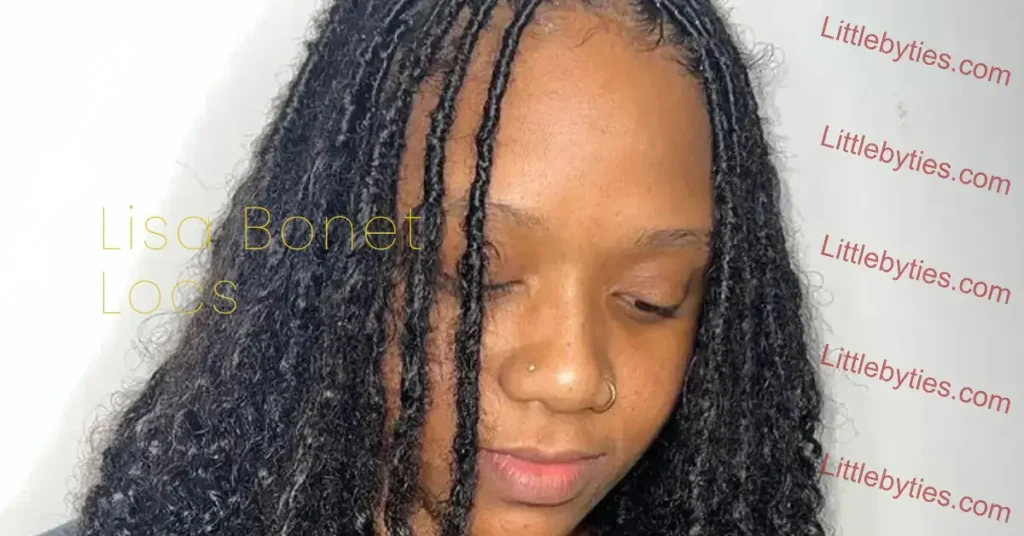Lisa Bonet is a well-known actress, famous for her role as Denise Huxtable on “The Cosby Show.” With a flair for the bohemian and a fearless attitude towards fashion, Lisa has become an enduring style icon. Her look is a mix of vintage charm and modern boldness, often featuring flowing dresses, earthy tones, and, of course, her signature locs. Lisa’s style is not just about clothes; it’s about expressing a unique, free-spirited identity that continues to inspire many.
The Evolution of Lisa Bonet Locs
Lisa Bonet’s hair journey is as dynamic as her career. Starting with the smooth, sleek styles of the ’80s, her hair has evolved into the iconic locs we recognize today. In the early days, Lisa’s hair was often seen in loose waves or straight styles, typical of the era. As time passed, she began embracing more natural textures, gradually moving towards the bold and beautiful locs.
Her locs first made a significant appearance in the ’90s and have since become a symbol of her personal and artistic evolution. They’ve grown longer, wilder, and more expressive, much like Lisa herself. These aren’t just a hairstyle for her; they represent a commitment to natural beauty, a rejection of conventional norms, and a deep connection to her heritage.
How to Achieve Lisa Bonet Locs Step-by-Step Guide
- Start with Clean Hair: Begin with freshly washed and dried hair. Ensure it’s free from oils and products for the locs to hold better.
- Section Your Hair: Divide your hair into sections. The size depends on how thick you want your locs. Smaller sections for thinner locs, larger for thicker ones.
- Twist or Braid: Start twisting or braiding each section. If you’re adding extensions, now is the time to incorporate them into your natural hair.
- Secure the Ends: Use a rubber band or a small hair tie to secure the ends of the locs temporarily.
- Palm Roll: To encourage the loc formation, palm roll each section. This means rolling the twists between your palms.
- Maintenance: Regularly wash your locs with a residue-free shampoo and maintain them by palm rolling or visiting a professional for touch-ups.
Discussing the Types of Hair Used for the Best Results
- FreeTress Braid Crochet Hair: This synthetic hair is popular for its natural texture and variety of lengths. It’s lightweight and blends well for a more natural look.
- Milky Way Que Human Hair: For those preferring a human hair option, Milky Way Que offers a soft and realistic texture. It’s durable and can be treated like natural hair, allowing for washing and styling.
- Combination Approach: Some might prefer a mix of synthetic and human hair for volume and texture. Consider your lifestyle and maintenance commitment when choosing.

The Cultural Impact of Lisa Bonet locs Hairstyle
Locs also hold cultural significance across various societies. In African cultures, they symbolize a connection to heritage and spirituality. In Rastafarianism, they represent a vow of religious and ethical commitment. Across the world, people wear locs as a means of expressing personal, spiritual, or cultural beliefs, often signifying strength, individuality, and rebellion against conventional norms. Lisa Bonet’s adoption of locs has helped promote cultural pride and diversity, sparking important discussions about identity and the beauty of embracing one’s roots.
Maintenance and Care for lisa bonet locs
Maintaining bohemian locs means keeping them healthy and stylish. Here are some tips and tricks for loc care:
Regular Washing
- Gentle Cleansing: Wash your locs every 2-3 weeks with a residue-free shampoo. This keeps them clean without drying them out.
- Rinse Thoroughly: Ensure all shampoo is rinsed out to prevent build-up.
Moisturizing
- Hydrate Your Scalp: Use natural oils like coconut or jojoba oil to keep your scalp and locs moisturized.
- Spray with Water: A daily spritz of water can keep your locs hydrated and fresh.
Retwisting
- Occasional Retwisting: Retwist your locs every 4-6 weeks to maintain neatness. Avoid over-twisting to prevent breakage.
Protecting
- Night Care: Wear a silk or satin scarf or bonnet at night to reduce frizz and breakage.
- Avoid Heavy Products: Use light, natural products to avoid build-up that can weigh down your locs.
Healthy Practices
- Balanced Diet: A healthy diet promotes strong and vibrant hair.
- Regular Trims: Trim the ends of your locs if they start to get weak or split.
Recommended Products
- Residue-Free Shampoo: Keeps locs clean without leaving residue.
- Light Oils: Coconut, jojoba, or almond oil are great for moisture.
- Rosewater: A gentle, hydrating mist for your locs.
Celebrity Influence: Lisa Bonet and Others Who Rock Locs
Celebrities Embracing Locs
Lisa Bonet has long been a locs icon, but she’s not alone. Many celebrities have embraced locs, each adding their personal touch.
- Zoë Kravitz: Lisa’s daughter, Zoë, has also rocked locs, showcasing a blend of her mother’s bohemian vibe and her own modern twist.
- Whoopi Goldberg: Known for her comedic genius, Whoopi has been wearing locs for decades, making them a part of her signature look.
- Lenny Kravitz: With his cool demeanor, Lenny Kravitz has sported locs as part of his rockstar image, exuding effortless style.
- Ava DuVernay: The acclaimed director wears her locs with grace, showing off the elegance and versatility of the style in the professional world.
Personalizing the Locs Style

Each celebrity has made locs their own:
- Zoë Kravitz often wears her locs in loose, bohemian styles, sometimes adding beads or rings for a touch of flair.
- Whoopi Goldberg keeps her locs long and free-flowing, reflecting her laid-back, yet assertive personality.
- Lenny Kravitz has varied his locs over the years, from tight, neat braids to a more relaxed, free-form look.
- Ava DuVernay showcases her locs in elegant updos and styles, proving their versatility and sophistication.
Common Misconceptions About Locs
There are several common misconceptions about locs (also known as dreadlocks) that often stem from a lack of understanding or exposure to this unique hairstyle. Here are some of the most prevalent myths, along with the facts to debunk them:
- Misconception: Locs Are Dirty or Unhygienic
- Fact: Locs are not inherently dirty. Like any other hairstyle, their cleanliness depends on the care and maintenance routine. People with locs wash their hair regularly to keep it clean and healthy.
- Misconception: Locs Don’t Grow
- Fact: Locs grow just as any other hair type does. The process of hair tangling and matting might make the growth less noticeable, but the hair continues to grow at its natural rate.
- Misconception: Locs Are Permanent
- Fact: While locs can be a long-term hairstyle, they are not necessarily permanent. With patience and the right technique, they can be safely and gradually combed out or cut if desired.
- Misconception: Only Certain Hair Types Can Form Locs
- Fact: All hair types can form locs. The method and time it takes to lock the hair might vary based on hair texture, but anyone can wear locs regardless of their hair type.
- Misconception: Locs Are Unprofessional
- Fact: Locs are a versatile and dignified hairstyle suitable for all settings, including professional environments. The stigma around locs is fading as more people embrace their natural hair in various areas of life.
- Misconception: Locs Limit Styling Options
- Fact: Locs are incredibly versatile. They can be styled in various ways, including updos, braids, and curls, offering as much variety as any other hairstyle.
Conclusion:
Lisa Bonet’s locs are more than a hairstyle; they’re a symbol of cultural pride and individuality. This guide explores her iconic locs, offering tips for creating and maintaining this natural, expressive look. Embrace your heritage and personal style, inspired by Lisa Bonet’s unique and impactful fashion statement.
Content Writer & Blogger · Abaidullah Shahid is a content writer and SEO Copywriter from Lahore, Pakistan. He got Google certifications in SEO, Digital Marketing and E-commerce, and has 3 years of experience in blogging. Abaidullah is a professional writer especially related to the fashion and lifestyle industry. He writes for various agencies, clients and his own website, invisiblelocs.net with passion.